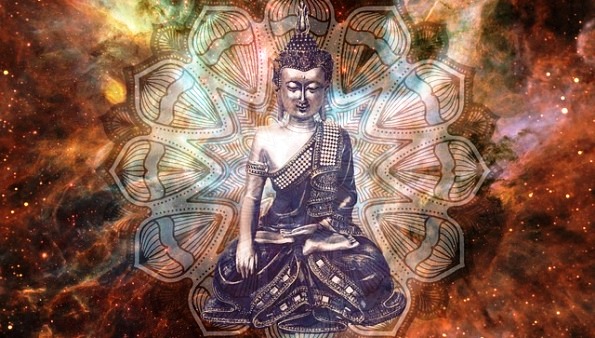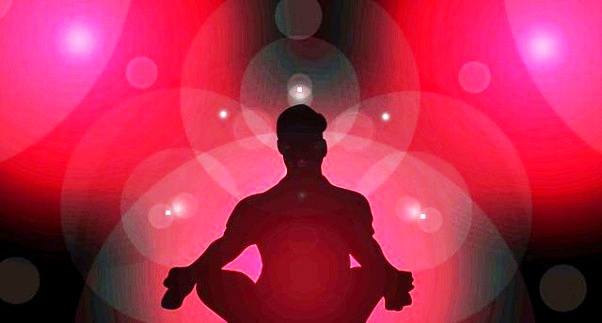Yoga
What is Samadhi Yoga: The 8th Limb Defined
Samadhi: The Absorption
TAD EVARTHAMATRA-NIRBHASAM SVARUPA-SHUNYAM IVA SAMADHIH (yoga sutrasIII.3)
Meditation continues until only the consciousness of the object remains is samadhi
It is clear that Dharana, Dhyana and Samadhi are actually the different phases of the same mental process. Each step differs from the previous one by the depth of concentration achieved and the increasingly complete isolation of the object of contemplation from distractions and self-awareness.
Samyama must be understood as the synthesis of the three stages of the mental process of meditation culminating in samadhi.
When the aspirant passes from Dhyana yoga (meditation) to Samadhi, then he totally loses self-awareness and the portal that leads to the world of reality can finally open. Patanjali calls this disappearance of the mental consciousness of himself: “Svarûpa Shûnyam Iva”. Which means: “The proper form or essential nature of the mind disappears, so to speak”.
Any description or explanation about the high state of Samadhi or contemplation is difficult, because words and sentences are merely an effort of the mind to submit to the brain of the personal self what will make it able to appreciate and understand the process.
In samadhi, the Yogi loses sight of:
- His cerebral consciousness, or notions of the physical plane relating to time and space.
- His emotional reactions to the process of his meditation.
- His mental activities; so that all the “modifications” of the thinking process , all the emotional reactions of the vehicle of the mind-desire (kama-manas) are subjugated, the Yogi being unconscious. However, he is intensely alive and alert, positive and awake; for the brain and the mind are firmly held together by him, and he makes use of them without any intervention on their part.
It literally means that the independent life of the forms through which the real self functions is quiet, pacified and subjugated, the real and spiritual man being awakened on his own plane and able to function by making full use of the brain, envelopes and the mind of the lower self – its vehicle or instrument. It is, therefore, centered in itself, or in the soul aspect. He has lost sight of any sense of separation, or inferior personal self; he identifies himself with the soul of the form that was the subject of his meditation.
No longer impeded by the mental substance, or by the nature of desire, it “penetrates” into a state which presents four preponderant characteristics:
- Absorption into the consciousness of the soul and, consequently, conscious cognition of the soul of all things. The form is no longer perceived and the vision of reality, which veil all forms, is revealed.
- Liberation outside the three worlds of sensory perception; so that only is known or can be the object of a contact, which is devoid of form, desire and concrete mental substance.
- The consciousness of being one with all the souls, subhuman, human and supra human. Group consciousness expresses this idea somewhat, just as the particular consciousness, or consciousness that a being can have of its own individual identity, characterizes consciousness in the three worlds.
- The illumination, or perception of the light aspect of the manifestation. Thanks to meditation, the Yogi knows himself to be light, to be a point of igneous essence.
Thanks to the ease with which the process of meditation takes place, he can focus this light on some object of his choice and “relate” to the light that hides this object. This light is then recognized to be one in essence with its own center of light, and understanding, communication and identification are then made possible.
There are ten samadhi states in the sutras yoga, each representing a different level of depth.

Samadhi explained by the Yoga Sutras of Patañjali below:
Samprajnata Samadhi according to Yoga Sutra #1.17:
Vitarka vichara ananda asmita rupa anugamat samprajnatah:Samprajnata Samadhi (deep concentration with concept/object in the field of awareness) consists of four kinds: 1)Gross (vitarka); 2)Subtle (vichara); 3)Bliss (ananda); 4)I-am-ness (asmita).
This defines a state of deep meditation on content:
The content can be anything; from an external object to an idea of the mind, but as long as there is active content, and consciousness is absorbed in that content, we call it Samprajnata Samadhi: Meditation (or absorption) with content.
According to Patañjali, this form of meditation or absorption (with content) consists of 4 levels. These are:
1: The gross (savitarka): This is the most dense, or solid level of meditation. It consists of meditation on physical objects (matter); sense perceptions; mental visualizations; gross mental activity/stream of thoughts; physical breath, among other similar content.
2: The subtle (savichara): This is a more subtle level of content and meditation. This level consists of meditation on the more subtle levels of matter/objects; energies; fundamentals of the mind; qualities, like: non-attachment.
3: The Bliss (ananda): This is an even subtler level of reality and meditation. It consists of meditation beyond the gross and subtle levels of the mind. In this state there is bliss accompanying the meditator.
4: I-am-ness (asmita): This level is one of the subtlest states of meditation as its focus is on the core of the individual; the I behind all experiences. The mantra related to this state is: “I am”.
The above sutra defines and sums up the whole process or levels of the concentration meditations. The other type of meditation is the mindless meditation, or the meditation without content, which will be defined in the upcoming sutra.
Asamprajnata Samadhi according to Yoga Sutra #1.18:
Virama pratyaya abhyasa purvah samskara shesha anyah:
Asamprajnata Samadhi is the other form of deep concentration in which there is no content in the field of consciousness; only the latent impressions remain.
Asamprajnata samadhi is a form of deep meditation without content:
In the previous Yoga Sutra of Patañjali he defined the types of meditation-states that fall under the ‘concentration upon content’ form and in this sutra he defines that there is a form of meditation that is without active content. This is the state that comes in between every of the above mentioned four states.
Like a person entering an elevator: Let’s say you are meditating on a Lotus Flower. The physical level of the flower is represented by the first floor of a building with in total 4 floors and a roof. What happens when you start meditating on the physical level of the flower and you enter Samadhi (a state of total absorption, deep concentration without fluctuation) you are discovering the first floor of this building. You are enjoying the smell maybe, experiencing and sensing the leaves, you are completely absorbed by the flower without disturbance, without any change in the mind, only the presence of the flower shining motionless in your mind.
After you are ready to let go of/pierce through this level and go beyond, you step into the elevator and enter Asamprajnata Concentration (meditation without content). This stepping into the elevator represents residing in your deep and contentless Self, without content or objects in your awareness, just nothingness. What happens when you enter this state is that your consciousness, the elevator, starts rising to the second floor.
Then you enter a whole new level of reality, of the flower in this case. It get’s more subtle everytime you come out of asamprajnata samadhi and enter the new floor. The higher the floor, the subtler the nature of your concentration and the level of the object on which you are concentrated. This goes on up to the fourth level. After this level, there is no deeper level to the objects/concepts of your focus. There remains only one level, which could be considered the roof of the building. It is free from walls, it has the highest view on the environment, no limits to its space, etc. It is the final level of meditation and it is an absolute state called in Yogic/Sanskrit terminology:
Dharma-Megha-Samadhi:
This is the roof of the building, beyond all levels and floors of this manifested universe lies the purest form of asamprajnata consciousness (Samadhi/concentration without content) and equals enlightenment. Acknowledging this state as your very being, your true nature, will result in losing your sense of I-ness, of me and mine and you will then reside in Pure consciousness alone as described by Yoga Sutra #1.3. When this state becomes your standard state of beingness, you have become a Buddha: A realized soul.

